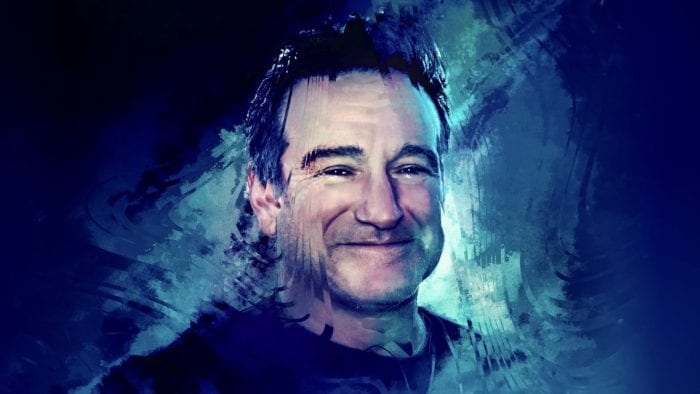Movie Review: ‘Robin’s Wish’ documentary pays tribute to Robin Williams
Reviewed by Jeffrey Sanzel
Robin Williams was a true artistic genius. A comedian and actor unlike any other, his persona graced film, television, and the stage, both stand-up and legitimate. His range of comedic and dramatic roles as well as his voiceover work made him unique even amongst the most versatile performers. Bursting onto the scene with the sitcom Mork & Mindy, he went on to memorable roles in The World According to Garp, Good Morning, Vietnam, Dead Poets Society, Aladdin, Mrs. Doubtfire; and many others.
Now a new documentary by Tylor Norwood, Robin’s Wish, explores the performer’s final days.
On August 11, 2014, the world was shocked by the 63-year-old’s death by suicide. Immediately following this heartbreaking event, speculation as to the cause was rampant. Among the explanations that were discussed included depression hearkening to his long struggle with drug addiction, frustration with what he perceived as the onset of Parkinson’s, and the “sad clown syndrome” often associated with comedians and comedic actors.

None of these turned out to be correct. It was revealed that Williams had been suffering from undiagnosed Lewy body dementia. According to the Mayo Clinic, Lewy body dementia is “… the second most common type of progressive dementia after Alzheimer’s disease dementia. Protein deposits, called Lewy bodies, develop in nerve cells in the brain regions involved in thinking, memory and movement (motor control). Lewy body dementia causes a progressive decline in mental abilities. People with Lewy body dementia may experience visual hallucinations and changes in alertness and attention. Other effects include Parkinson’s disease-like signs and symptoms such as rigid muscles, slow movement and tremors.”
The tragic fact is that Williams had all of these symptoms. He was aware that something was wrong but could not articulate what he was going through, gradually manifesting increasingly odd and startling behaviors.
Those looking for a documentary that delves into Williams’ life will be disappointed. Little is explored in his earlier career, his meteoric rise to stardom, and his incredible body of work, as well as the darker moments in his journey. There is only the smallest nod towards his addictions and eventually sobriety. It does share accounts from his time overseas, entertaining the troops and visiting hospitals. This gives a small glimpse into what is most likely a much larger and richer story.

The film focuses mainly on the last two years of his life, only reaching back to about 2011 and his marriage to his third wife, Susan Schneider, who is the driving force and main storyteller of the film. How they met and the growth of their relationship is offered but little else in his personal or public life prior to this is touched upon.
Much of the emphasis is placed on two of his last projects: the film Night at the Museum: Secret of the Tomb and the television show The Crazy Ones. His colleagues talk with great respect for his work and love for him a person. In retrospect, they all had varying degrees of awareness that something was off, including his bouts of insecurity as well as a new found challenge in learning and retaining lines. It is a tribute to their feelings for Williams that none of this came out during these two processes.
The balance of the film is taken up with alternating between doctors and scientists explaining the nature of the disease and Schneider’s mix of guilt and sadness as she relates his gradual disintegration. Her love for Williams comes through and the importance of telling his story is clearly present.
The goal of the film is a noble one: It is bringing awareness to a terrible and deadly disease. However, much of it feels padded out. The interviews are repetitive, with people covering the same ground. The individual accounts are broken up as an attempt to make them look more varied and expansive but it doesn’t quite land. In particular, interviews with Williams’ neighbors have a strange “we knew there was something wrong in the house” quality that seems out of step with the film’s objective.
In addition to some archival clips, there is an overly generous use of recreative footage that gives the whole piece the look of an exploitive crime recreation or a behind-the-autopsy show. This unnecessary stuffing cheapens the film, which would have benefited from either cutting its already short running time of an hour and a quarter or expanding it to a fuller exploration of the life of an American artist.
Robin’s Wish, while strong in purpose, only makes us yearn for a larger and more complete portrait of a complex and exceptional man.
Not rated, Robin’s Wish is streaming on demand.







